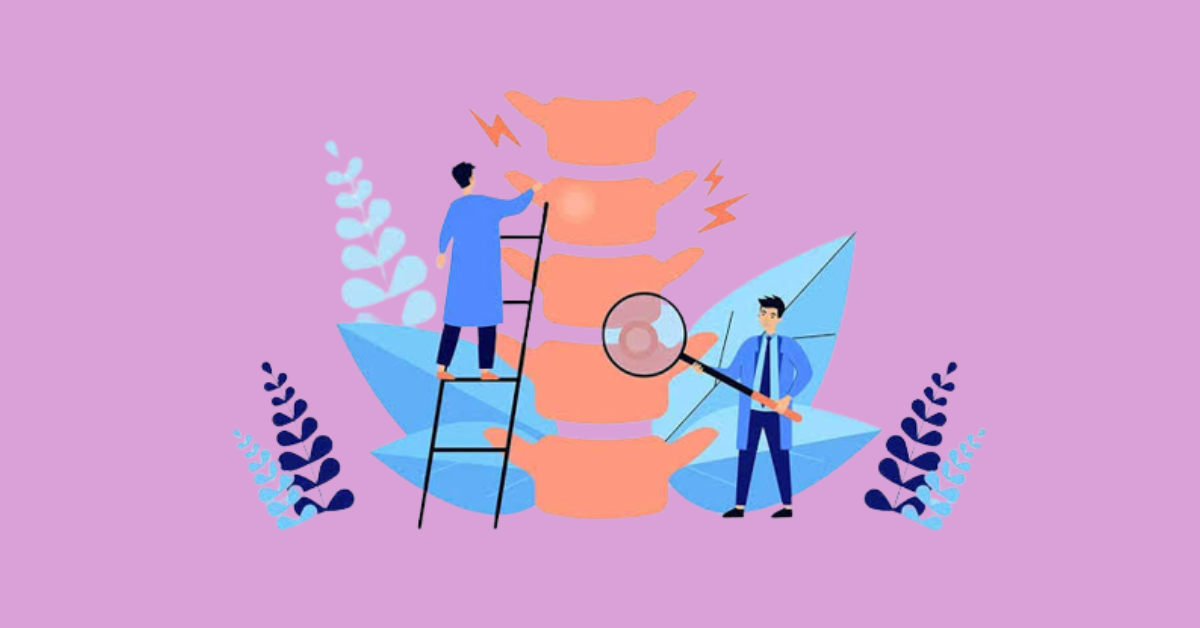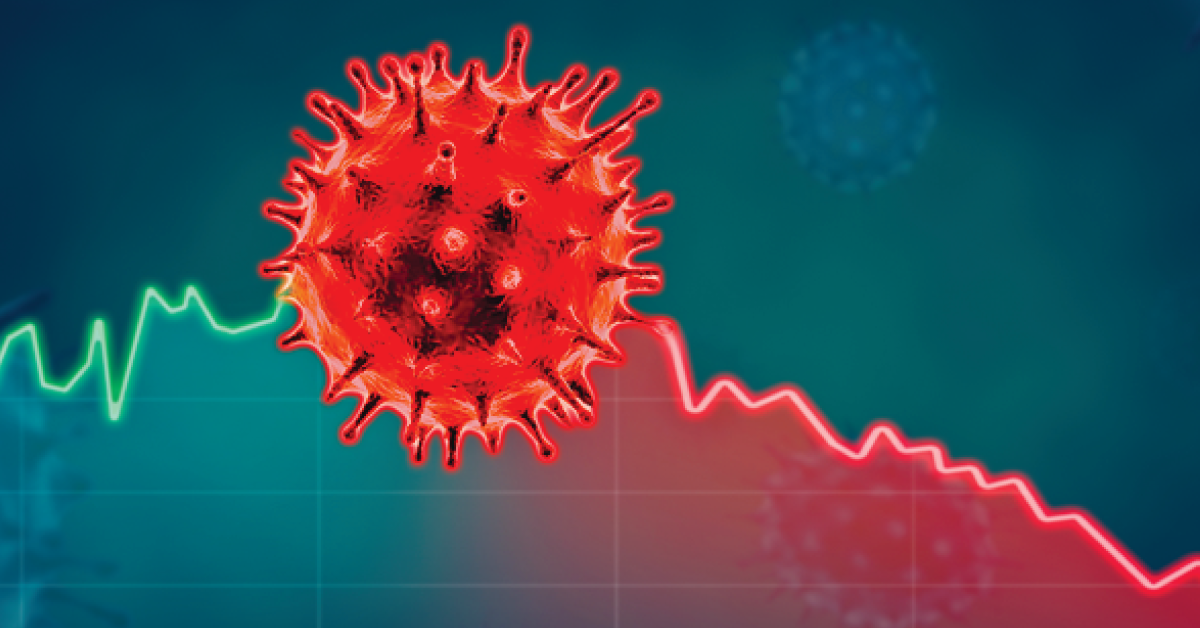
The vertebrae that make up your spinal column are stacked one on top of the other. The column is made up of seven cervical spine bones, twelve thoracic spine bones, five lumbar spine bones, the sacrum, and the coccyx at the base. Discs support these bones and cushion them. By absorbing the shocks from regular actions like walking, lifting, and twisting, the discs shield the bones from injury. The slip disc pain is not easy going and thus you must consult a General physician or go to the family physician for seeking more insights on the same.
Each disc is composed of an outer ring and a soft, gelatinous interior component. The interior part of the disc may poke through the outer ring due to damage or weakness. A slipping, herniated, or prolapsed disc is what this is. This hurts and is uncomfortable. You might also feel numbness and discomfort along the afflicted nerve if the slip disc compresses a spinal nerve. If the situation is serious, you might need surgery to remove or fix the slip disc. The slip disc pain is unbearable sometimes and for this you can seek online consultation which is available immediately and try to treat all the slip disc causes.
Symptoms of Slip Disc
Any area of your spine, from your neck to your lower back, is susceptible to slip discs. One of the more typical places for slipping discs is the lower back. Your spinal column is a complex web of blood vessels and nerves. The muscles and nerves nearby can experience increased pressure as a result of a slip disc. The slip disc pain can go to an extreme level if the slip disc cause is ignored or if you don’t visit a general physician immediately.
The following are signs of a slip disc:
- Usually on one side of the body, pain and numbness that spreads to your arms or legs
- Slip disc pain that gets worse at night or when performing particular motions
- Discomfort that gets worse after standing or sitting discomfort after taking brief walks
- A mystery muscular weakness
- Feeling of tingling, aching, or burning in the affected area
- Different people experience different kinds of pain.
Causes of Slip Disc Pain
When the outer ring is weakened or damaged, the inner section of the disc might fall out, resulting in a slip disc. Aging can slip disc causing this. A slip disc pain might also result from specific motions. While you are bending or rotating to lift an object, a disc could come loose. A slip disc pain can occur as a result of lifting a very large, heavy object, which puts a lot of strain on the lower back. You may be more susceptible to slip discs if your profession is physically demanding and involves a lot of lifting. You must try to consult a general physician or family physician if you are experiencing any of the symptoms of slip disc.
People who are overweight are more likely to experience a slip disc because their discs must work harder to maintain the extra weight. A sedentary lifestyle and weak muscles may also contribute to the development of a slip disc pain.
You are more likely to get a slip disc as you age. This is due to the fact that as you get older, your discs start to lose part of their protective water content. They are therefore more likely to move out of place. Men experience them more frequently than women.
How is a slip disc identified?
Your family physician will examine you physically first. They’ll be searching for the cause of your discomfort and agony. To do this, it will be necessary to assess your nerve and muscle strength as well as whether you experience pain when moving or contacting the affected area. In addition, your doctor will inquire about your health history and symptoms. When you first start experiencing symptoms and the activities that make your discomfort worse will be of interest to them.
Your family physician or general physician can see your spine’s bones and muscles with the aid of imaging scans to look for any damaged areas. Imaging scan examples include:
- X-rays
- A CT scan
- Discograms MRI scans
All of these pieces of information can be combined by your doctor to identify the source of your discomfort or weakness.
What issues can arise from a slip Disc Pain.
Permanent nerve damage might result from a significant slip disc that is left untreated. A slip disc may, in extremely rare circumstances, prevent nerve impulses from reaching the cauda equina nerves in your lower back and legs. You could lose control of your bowels or bladder if this happens.
The condition known as saddle anaesthesia is another long-term consequence. Your inner thighs, the back of your legs, and the area around your rectum go numb as a result of the slip disc pain compressing your nerves.
What is the remedy for slip disc pain?
A slip disc pain can be treated surgically or conservatively. The course of treatment is usually determined by how much pain you’re in and how much the disc has moved out of place.
Using an exercise regimen that stretches and strengthens the back and surrounding muscles, the majority of people can get relief from slip disc discomfort. Exercises that might strengthen your back and lessen your back discomfort may be suggested by a physical therapist.
Additionally helpful are using over-the-counter painkillers, avoiding strenuous activity, and uncomfortable positions.
When you have a slip disc, it may be tempting to avoid all physical activity, but doing so can cause muscle weakening and joint stiffness. Instead, make an effort to stay as active as you can by stretching or engaging in low-impact sports like walking.
Stronger medications may be prescribed by your doctor if the pain from a slip disc does not go away with over-the-counter remedies. These consist of:
- Drugs that relax the muscles to treat spasms
- Narcotic painkillers, such as gabapentin or duloxetine, as well as nerve pain relievers
- If your symptoms do not go away after six weeks or if your slip disc pain is impacting your ability to use your muscles, your doctor might advise surgery.
Types of Slip Disc Pain and Slip Disc causes
A gel-filled disc that serves as a shock absorber and facilitates spinal movement is located between each vertebra. A bulging, injured disc could force its way backward into the spinal canal. People with a bulging disc are likely to experience pain and tingling on just one side of the body since the disc typically protrudes toward one side of the canal (either the right or left).
Your neck’s bulging disc may not be very painful. Alternately, it may result in excruciating discomfort in your neck, shoulders, chest, and arms. Additionally, it might make your fingers or arms numb or weak. This discomfort and numbness might occasionally make you feel as though your heart is about to stop.
To help prevent future problems with your back, try to maintain a healthy weight. Always use proper lifting techniques. Strong abdominal and back muscles help support your spine, so be sure to exercise them regularly. Your general physician or physical therapist can recommend exercises designed for that purpose.

